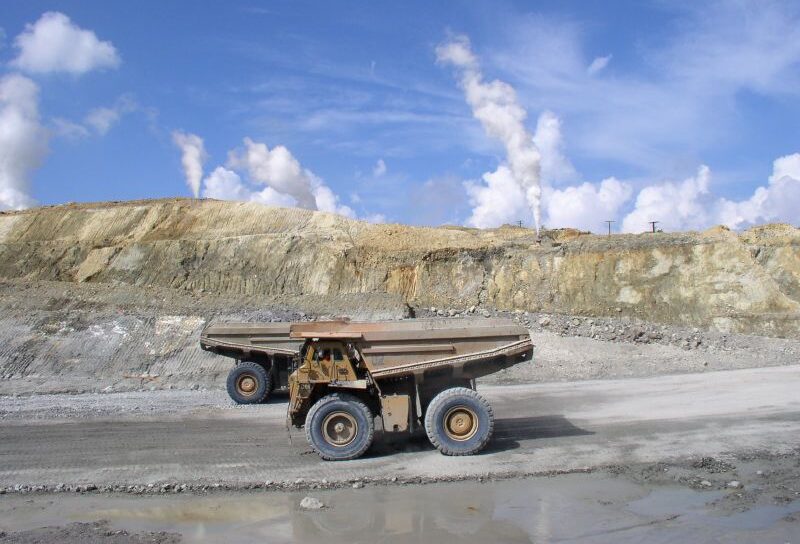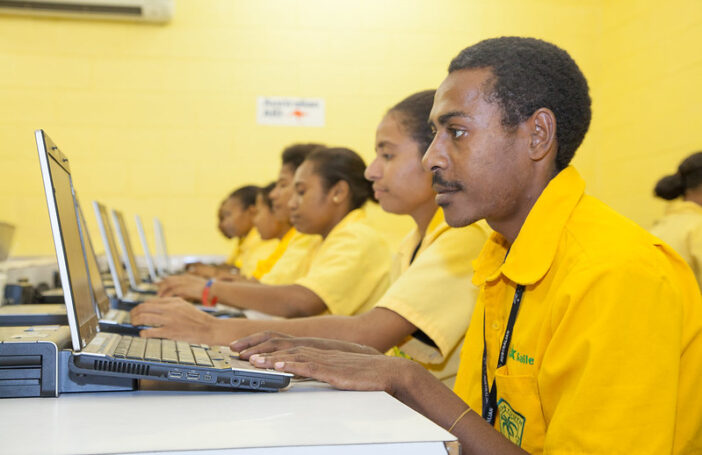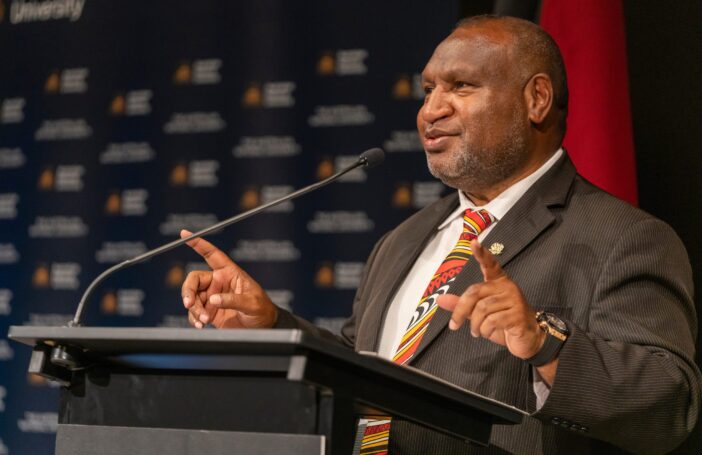Papua New Guinea is often described as a “resource-rich” country. The phrase appears on government websites, media reports and statements from international organisations. Prime Minister James Marape stated at the start of 2025, “PNG is uniquely positioned as a resource-rich nation close to major markets in Southeast Asia, China and India”.
At first glance, PNG’s reserves of gold, copper, oil and gas seem to justify the label. Indeed, we are often told that upcoming resource projects will “transform” the economy. But into what, exactly? A wealthy country with world-class infrastructure? A moderately prosperous one with strong education and health systems? Or a nation still struggling to provide essential services?
Around 27% of GDP comes from the resource sector, making it one of the most resource-intensive economies in the world, comparable in this measure to Saudi Arabia. But that is where the comparison ends. High dependence does not equate to high wealth. And, as discussed, this is where confusion may lie.
So, what should Papua New Guineans realistically expect from the country’s much-discussed resource endowment? This question matters greatly: it shapes national hopes, political rhetoric and the policies governments choose to pursue.
The short answer? Not as much as some might think. And that gap between expectation and reality can lead to serious economic, political and social consequences.
The phrase “resource-rich” is vague, so it’s worth defining what we mean. I suggest two ways to think about resource richness. First, absolute abundance: a country has such large total reserves that it becomes a major player in global markets, gaining economic and geopolitical influence. Second, high per-capita resource wealth: a country has enough natural wealth per person to lift living standards significantly, provided the benefits are shared and managed wisely.
While the first definition helps put PNG in its global context, the second is more important when assessing what resources mean for ordinary citizens.
World Bank data on total resource rents — the economic value extracted from oil, gas, minerals and forestry after production costs — ranks PNG in 41st place globally. (The dataset of course excludes all countries with no data, which includes countries with considerable resource wealth — Kuwait, Venezuela, Syria, South Sudan, Turkmenistan, North Korea and Yemen. So, this figure likely overstates PNG’s importance.) Given PNG’s relatively small size, this does make sense. The country extracts more than most but remains a minor player in global markets.

What about per-capita resource wealth? This is the more relevant measure for understanding how resources might affect people’s lives. On the same World Bank measure adjusted per citizen, PNG ranks 36th globally, with approximately US$1,089 in resource rents per person, per year — equivalent to about US$2.75 a day. That figure is enough, in theory, to lift every citizen above the global monetary poverty line, by roughly 60 US cents a day.

US$1,089 per person is a significant amount — though hardly what people picture when they hear the phrase “vast riches”. Even if PNG’s resource rents doubled, they would only reach the per-capita level of Timor-Leste — a country still facing major development challenges. And, of course, these resource rents are not shared equally across citizens. They are divided between private companies, landowners and government. The underwhelming contribution of the resource sector to government revenues and the lack of spillover benefits to the rest of the economy have already been much discussed, even compared to countries with similar levels of resource intensity.
While PNG’s figure is below the global average of US$1,370 (due to the concentration of resources in a few countries), it is far above the global median of US$238. This helps explain why PNG is sometimes described as resource-rich compared to other nations. Still, the label can be misleading. It creates expectations of national prosperity when the reality is more modest: meaningful economic benefits for some individuals or regions, but less for society as a whole.
The opportunity for wealth at the individual level, without significant widespread societal benefit, also means the resource sector is often a source of conflict. Meanwhile, the difficult policy work required to foster growth in the non-resource sectors — which are larger and offer greater long-term potential — is too often neglected.
This gap between perception and reality carries a cost. Labelling PNG as “resource-rich” — or mistaking resource dependence for per-capita wealth — has real consequences. It reinforces the political and public focus on extractive industries, at the expense of investment in productive infrastructure, agriculture and public services. It can perpetuate myths of imminent windfall revenues, delaying necessary reforms. It distorts PNG’s sense of who its economic peers are, and in doing so, encourages the perception that PNG can and should emulate the spending habits of far wealthier resource-rich nations.
The PNG government’s now-infamous “wish list“, which included a Formula One track, is a case in point. Were decision-makers perhaps drawing false comparisons with countries like Qatar, Saudi Arabia or Azerbaijan — resource-rich nations that do host high-end racing competitions? This is speculation, but the connection between volatile resource revenues and questionable government spending choices is well-documented.
Such challenges are common in countries that are resource-intensive, as explored in the extensive resource-curse literature. As Figure 3 shows, PNG ranks as the 15th most resource-intensive country globally — yet most countries above it do not offer their citizens a particularly high or even middle-class standard of living.

Recognising the limits of PNG’s resource wealth need not be discouraging. In fact, it can be liberating. At the bottom of the World Bank’s rankings is Singapore — by some measures the richest country in the world and a nation that has built prosperity by leveraging its human capital, geography and governance. Certainly, resources are not the only path to better development outcomes.
Extractive industries will remain important in PNG’s economy. But the label “resource-rich” creates confusion and does more damage than good. Meanwhile, lasting, widespread prosperity will depend on a broader development vision: one that invests in people, builds infrastructure and strengthens institutions.





Super interesting comparison, where we realise that, Gulf countries aside, Australia (and Russia!) are really “up there” in terms of resource revenues per capita.
Would be interesting to look at:
– comparison with other Pacific countries
– comparison of reserves. Maybe PNG has a lot of them compared to resource rent?
Also maybe looking at 2021 only skews the analysis, given how volatile resource prices have been since then.
Hi Raphael, apologies for the delay, really interesting points. On other Pacific countries, they don’t really have oil/mining to any important degree – Fiji has a little, Sols does have high resource rents – but from forestry – so PNG is very much an outlier in its landmass size, population size and mining/oil dependence in the Pacific. On reserves, there are certainly many new resource projects in discussions, and a doubling of output at some time in the future seems possible – though as mentioned, this would put PNG at the level of Timor-Leste. Highlighting that future revenues are not likely to turn PNG into a Fiji or Mauritius or Malaysia or Azerbaijan. You’re right that 2021 is somewhat of an outlier, however, at least for PNG its average resource rent as % of GDP for the last 20 years was around 20%, while in 2021 it was 27%, so it likely overstates the importance of resources in PNG historically. Though at the same time resources have been increasing in importance as a % of GDP in PNG in the last few years too.
Great piece, Rohan. It’s all pretty relative, and the definitions get muddy, with the rhetoric having strong implications, as you point out.
The 90s work on this topic used the term abundance, but the indicator was typically the resources’ share of exports (think Sachs and Warner), which of course, only measures export dependence. Then, that got split into point and diffuse resources, different types, etc. Then, people shifted to reserves (Norman was the original dataset on this), often put in per capita terms, as a measure of abundance, and termed the former dependence. The consensus then was that volatility was really the key, and it was in this era that the Natural Resource Charter emerged (now, NRGI I think), which I think then and to this day represents best practice in resource policy recommendations. The resource rents measure surfaced somewhere in between, although I was never a big fan, and where people had access (as the best geotagged data are commercial), the most popular and best data to use in empirical work became “discovery” shocks (see Rabah Arezki’s work) and production levels (or taking the endowments as a given and just using price variation), which I think made more sense and allows for more credible measurement and research designs. In my first PhD chapter (the WD paper) I instead used mining share of GDP to pick up current mining dependence more specifically, but an interesting point raised in using reserves as well is that they’re estimates and known, where the extent to which they are known is also endogenous as a function of exploration effort, tech, etc., which is in turn a clear function of institutions, see Cust et al JEEA). So, no matter which way you go, there are limitations and I guess it comes down to just being clear on what you are trying to measure.
But this is a roundabout way of saying its nice to see your post, and this topic discussed more here. The WB team’s recent work, which they presented in our UPNG seminar, on development trends observed using different rounds of different survey data, makes similar points and does some interesting comparisons to other “resource-rich” countries, if I recall correctly. It is an important grounding discussion to have.
Relatedly, we (Kelly and I, with generous inputs from Colin F) put together a district-level dataset of mine locations with opening dates, if that can be of further use to you or anyone reading. Of course, research-ready subnational panel data does not really exist to link it to though.
Thanks Ryan, really useful! Apologies for the delay, I didn’t get an email notification of replies. Yes that WB paper is excellent (and in fact cited in the blog), and yes would also be interested to look through the mine location dataset at some stage. Cheers.